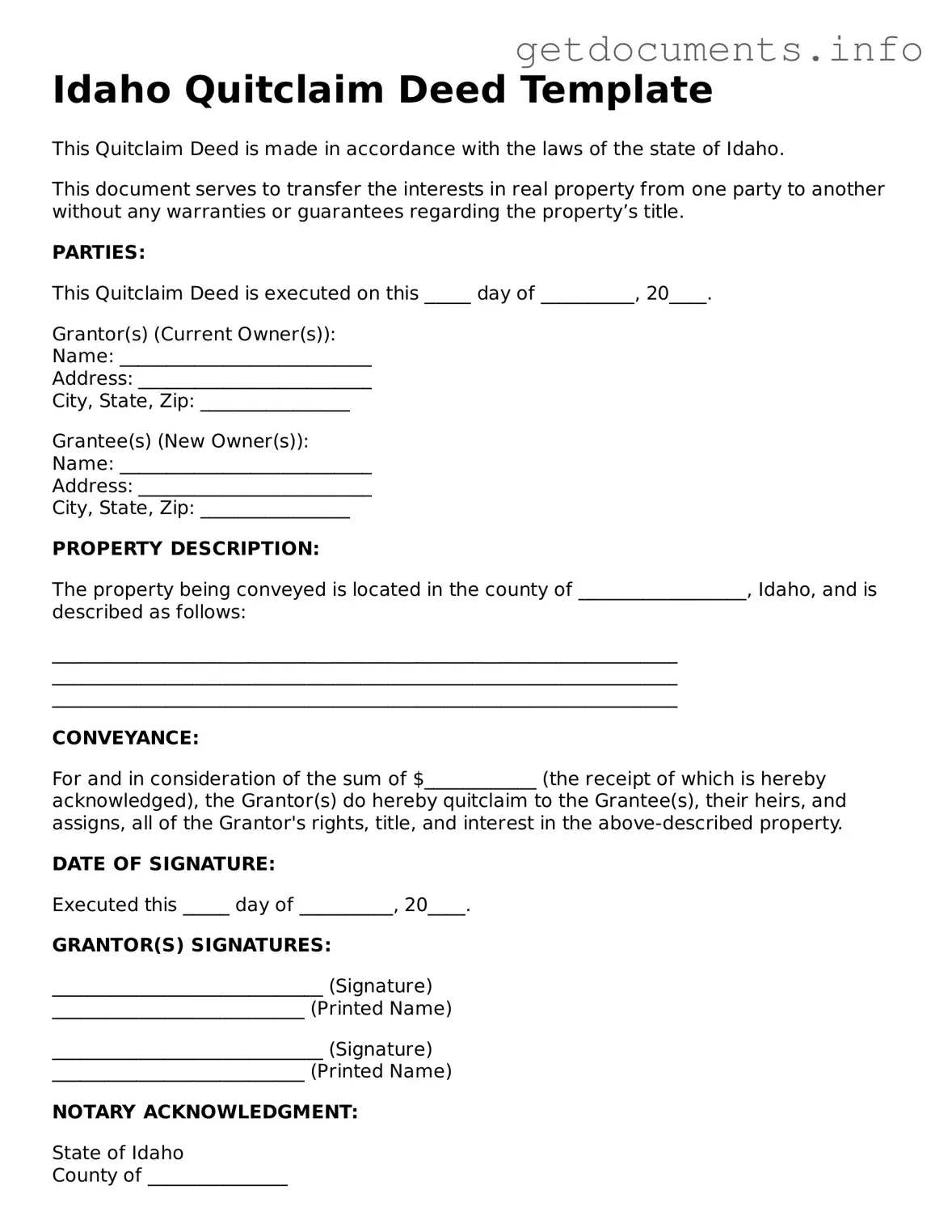Free Quitclaim Deed Template for Idaho
A Quitclaim Deed is a legal document used to transfer ownership of real estate from one party to another without any warranties or guarantees regarding the property title. This form is particularly useful in situations where the parties know each other well, such as family transfers or divorces. For those looking to complete a property transfer in Idaho, filling out the Quitclaim Deed form is a straightforward process; click the button below to get started.
Access Quitclaim Deed Editor
